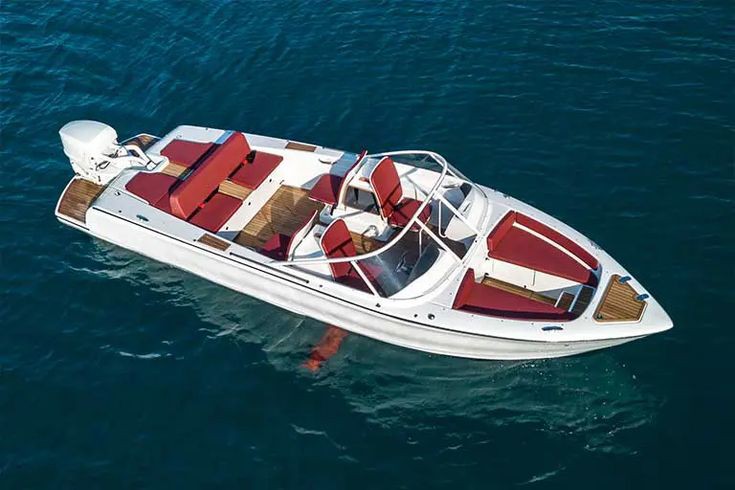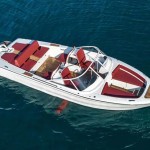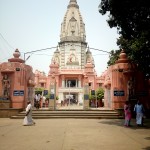Preface
Two of the holiest towns in India, Ayodhya and Varanasi, are about to experience a dramatic change in their visitor environments. These cities draw millions of pilgrims and tourists every year because of their rich religious history and legacy. As part of its ongoing efforts to promote tourism and protect the environment, the Uttar Pradesh government has announced the launch of electric boats on saryu and ganga rivers.
By providing a calm and environmentally responsible form of transportation and protecting the pristine state of these holy rivers, this project is poised to completely transform how visitors experience these precious locations.
India's Growing Ecotourism Industry
In India, ecotourism has become a key component of sustainable development. With concerns over environmental degradation and climate change growing worldwide, the tourist sector is putting more and more emphasis on eco-friendly methods that leave fewer ecological footprints. An indication of this expanding tendency is the launching of electric boats in Varanasi and Ayodhya. These boats, which run on electricity rather than fossil fuels, are made to lessen the negative environmental effects of riverside tourism, including noise and water pollution.

The Importance of the Environment
Not only are the Saryu and Ganga rivers vital to millions of people's spiritual life, but they are also important natural resources. Nevertheless, the conventional boats that run on gasoline or diesel have long been a source of pollution, endangering the well-being of these rivers and the various ecosystems they sustain. The Uttar Pradesh government wants to drastically lower the pollution levels in these rivers by swapping out traditional boats for electric ones. Since electric boats emit no emissions into the atmosphere or the water, they are free of dangerous pollutants including nitrogen oxides, hydrocarbons, and carbon monoxide. The ecosystem and the people who depend on these rivers for their livelihood stand to gain from this change in the quality of the water in these rivers.
Improving Traveler Experience
Beyond its positive effects on the environment, the installation of electric boats is expected to improve visitors' overall experience in Varanasi and Ayodhya. These boats will provide a calmer, more comfortable voyage, enabling guests to completely lose themselves in the meditative ambiance of the rivers. The quieter boat journeys will result from the lack of engine noise, creating the ideal environment for prayer, meditation, or just taking in the picturesque view of the temples and ghats that line the riverbanks. The air-conditioned boats are a popular choice for travelers of all ages since they provide a relaxing experience, particularly in the sweltering summer months.
Infrastructure Growth and Its Economic Effects
The Uttar Pradesh government is introducing electric boats as part of a larger plan to increase religious tourism in Varanasi and Ayodhya. Alongside this endeavor, a large amount of infrastructure is being developed. The Uttar Pradesh State Tourism Development Corporation will be in charge of managing the docking and charging facilities that will be built at the ghats. Numerous job possibilities, ranging from boat operators and maintenance personnel to those involved in the construction and operation of the new facilities, are anticipated to be created in the region by these projects.
Encouraging Spiritual Travel
An important factor in Uttar Pradesh's economy is religious tourism. Millions of tourists travel to the state from all across the nation and the world, with Ayodhya and Varanasi serving as its hubs.
More tourists are anticipated as a result of the introduction of electric boats, especially those who are looking for sustainable travel options and are concerned about the environment. Given the state's rich religious and cultural legacy and the improved tourist experience these boats offer, Ayodhya and Varanasi are expected to become India's top spiritual tourism destinations.
Financial Prospects for Regional Communities
It is anticipated that this effort would have an economic impact outside of the travel and tourist sector. The increased foot traffic and demand for related services will benefit local communities, especially those residing along riverbanks. Building infrastructure like docking stations, boat servicing facilities, and associated services will boost the local economy and provide jobs.
In addition, the usage of electric boats would probably make the ghats cleaner and quieter, which will draw more tourists and increase revenue for nearby service providers like guides and sellers.
 Innovation and Technical Progress
Innovation and Technical Progress
The electric boats that are being unveiled in Varanasi and Ayodhya are an innovative display of state-of-the-art technology. The boats will have cutting-edge designs, with FRP (Fibre-Reinforced Plastic) catamaran hulls for the non-air-conditioned models and steel catamaran hulls for the air-conditioned ones. These components are selected to ensure that the boats are strong and environmentally sustainable due to their longevity, safety, and effectiveness.
Functionality and Sustainable Design
The boats are built to run smoothly and use the least amount of energy possible. They'll have cutting-edge battery technologies installed that enable for extended operations between charges.
In order to facilitate speedy and effective boat recharging during times of low demand, charging stations will be positioned strategically at the ghats. In addition, the design incorporates elements that improve passenger comfort and safety, like roomy seating, easy-to-use navigation controls, and emergency safety systems.
Compliance with Global Guidelines
The boats will be used in accordance with strict environmental and safety regulations. They will follow the rules issued by the Department of Tourism, the Inland Vessel Act, and global guidelines for electric boats. This guarantees that the boats not only give visitors an excellent experience but also support international initiatives to lower carbon emissions and save marine habitat.
The Function of Partnerships and the Government
The cooperative efforts of numerous government departments and commercial partners have played a significant role in the success of the electric boat venture in Ayodhya and Varanasi. The initiative is being spearheaded by the Uttar Pradesh government through its Tourism Development Corporation, but collaborations with infrastructure developers, technology companies, and local communities are also a part of it.
Cash and Support from the Government
The government of Uttar Pradesh has exhibited robust backing for this endeavour, acknowledging its capacity to augment tourism while advocating for sustainability. The financing set up for the construction of essential infrastructure, such docking stations and charging stations, demonstrates the government's commitment. Furthermore, the ten-year initial lease agreements for the boats offer long-term stability for the project and promote investment in the area.

Working together with NGOs and the Private Sector
Apart from the backing of the government, the initiative has garnered attention from commercial enterprises that specialize in the development of infrastructure and electric car technologies. These businesses contribute significant resources and experience, assisting in ensuring that the boats are constructed and run to the greatest standards. Non-governmental organizations (NGOs) that prioritize sustainable tourism and environmental protection have also contributed to the project's development, offering advice on best practices and serving to increase public awareness of the value of eco-friendly travel.
Difficulties and Hope for the Future
Although the deployment of electric boats in Varanasi and Ayodhya is a positive development, there are certain difficulties.
Operating and Technological Difficulties
Assuring the electric boats' dependability and effectiveness will be a major task, especially in the early stages of their operation. Even though the technology is cutting edge, it is still relatively new for Indian river transportation. It will be imperative to guarantee that the boats can function well in diverse weather scenarios, have an adequate amount of battery life, and offer tourists a continuously excellent experience.
Acceptance and Community
Involvement Local communities' approval and support will also be critical to the initiative's success. It will be crucial to interact with these groups, respond to their issues, and make sure they gain from the project.
To foster trust and guarantee that the project's economic benefits are distributed fairly, the government and its partners will need to collaborate closely with local stakeholders.
Growth and Upcoming Prospects
In the future, there is a great chance that the usage of electric boats will spread throughout Uttar Pradesh and beyond. If effective, other towns with significant rivers or bodies of water might adopt the same model created in Ayodhya and Varanasi, which would support a wider movement in India toward sustainable tourism. There are other chances to improve the technology even more, such incorporating renewable energy sources to charge the boats or creating hybrid versions that can function in a greater variety of environments.
Final Thoughts
An important advancement in the development of religious tourism in India has been made with the deployments of electric boats in Ayodhya and Varanasi. The Uttar Pradesh government is improving the tourism experience and helping to preserve the environment and the holy rivers that are essential to these cities' spiritual identities by adopting eco-friendly technology. As this project develops, it has the potential to change how people interact with these sacred locations and provide a more enduring, tranquil, and fulfilling experience for all visitors.
The project's success could act as a model for other areas, demonstrating how sustainable tourism can spur economic development while preserving our natural and cultural heritage. As the cities of Ayodhya and Varanasi begin this new chapter in their illustrious histories, they serve as beacons of hope for a more prosperous and environmentally friendly future by demonstrating how tradition and modernity can coexist peacefully.












